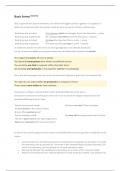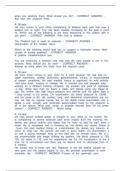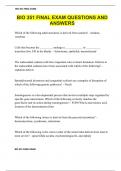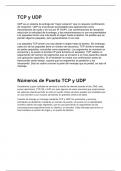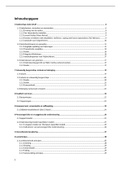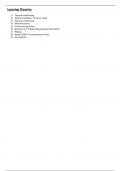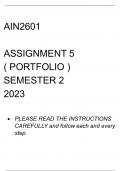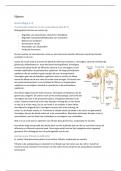Basic forms B1 B2 C1
[B1] Je gebruikt een passive wanneer je de nadruk wilt leggen op wát er gebeurt of is gedaan, in
plaats van op wíe iets doet. Een passive maakt de toon van een zin of tekst vaak formeler.
Nadruk op wie iets doet: The chairman asked my colleague to join the discussion. = active
Nadruk op wat er gebeurde: My colleague was asked to join the discussion. = passive
Nadruk op wie iets doet: We keep the important files in a safe. = active
Nadruk op wat er gebeurt: The important files are kept in a safe. = passive
Je maakt een passive met een vorm van to be gevolgd door een voltooid deelwoord.
Let op: de vorm van to be in een passive wordt naar het Nederlands vertaald met worden.
The magazine is read by all sorts of people.
Het tijdschrift wordt gelezen door allerlei verschillende mensen.
The workshop was held in a popular coffee shop after hours.
De workshop werd gehouden in een populaire koffiebar na sluitingstijd.
Als je wel wilt toevoegen door wie of wat de actie werd uitgevoerd, gebruik je het voorzetsel by.
The labels for our water bottles are produced by a company in France.
These reports were written by Emile Johnston.
De passive is zelf geen werkwoordtijd. Iedere werkwoordtijd kan echter wel in
een passive constructie worden gezet. Hoe to be in de zin wordt vervoegd, hangt wel af van de
werkwoordtijd waarin de zin staat.
Passive met present simple Tax forms are sent in blue envelopes.
He isn’t invited to the network event.
Is your office painted green?
Passive met past simple We were told the appointment was at three.
The form wasn’t sent to the right department.
Were they informed of the correct protocol?
Je kunt in een aantal stappen van een actieve zin (bedrijvende vorm) een passieve zin (lijdende vorm)
maken.
• Lees de actieve zin. Het lijdend voorwerp of meewerkend voorwerp van de actieve zin wordt
het onderwerp van de passieve zin. Hieronder is the company blog het lijdend voorwerp. Dit
wordt het onderwerp van de passieve zin en komt vooraan te staan.
• Kijk naar de tijd waar het werkwoord in de actieve zin in staat: writes = present simple.
• Maak van dit werkwoord een voltooid deelwoord: write wordt dus written in de passieve zin.
[B1] Je gebruikt een passive wanneer je de nadruk wilt leggen op wát er gebeurt of is gedaan, in
plaats van op wíe iets doet. Een passive maakt de toon van een zin of tekst vaak formeler.
Nadruk op wie iets doet: The chairman asked my colleague to join the discussion. = active
Nadruk op wat er gebeurde: My colleague was asked to join the discussion. = passive
Nadruk op wie iets doet: We keep the important files in a safe. = active
Nadruk op wat er gebeurt: The important files are kept in a safe. = passive
Je maakt een passive met een vorm van to be gevolgd door een voltooid deelwoord.
Let op: de vorm van to be in een passive wordt naar het Nederlands vertaald met worden.
The magazine is read by all sorts of people.
Het tijdschrift wordt gelezen door allerlei verschillende mensen.
The workshop was held in a popular coffee shop after hours.
De workshop werd gehouden in een populaire koffiebar na sluitingstijd.
Als je wel wilt toevoegen door wie of wat de actie werd uitgevoerd, gebruik je het voorzetsel by.
The labels for our water bottles are produced by a company in France.
These reports were written by Emile Johnston.
De passive is zelf geen werkwoordtijd. Iedere werkwoordtijd kan echter wel in
een passive constructie worden gezet. Hoe to be in de zin wordt vervoegd, hangt wel af van de
werkwoordtijd waarin de zin staat.
Passive met present simple Tax forms are sent in blue envelopes.
He isn’t invited to the network event.
Is your office painted green?
Passive met past simple We were told the appointment was at three.
The form wasn’t sent to the right department.
Were they informed of the correct protocol?
Je kunt in een aantal stappen van een actieve zin (bedrijvende vorm) een passieve zin (lijdende vorm)
maken.
• Lees de actieve zin. Het lijdend voorwerp of meewerkend voorwerp van de actieve zin wordt
het onderwerp van de passieve zin. Hieronder is the company blog het lijdend voorwerp. Dit
wordt het onderwerp van de passieve zin en komt vooraan te staan.
• Kijk naar de tijd waar het werkwoord in de actieve zin in staat: writes = present simple.
• Maak van dit werkwoord een voltooid deelwoord: write wordt dus written in de passieve zin.

